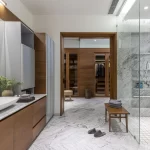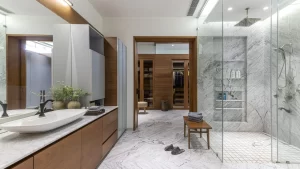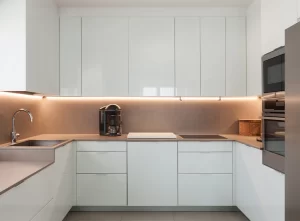Empire Style Furniture
4 min read
Whether you’re looking for furniture made to look like a palace or a simple sofa, Empire style pieces can be found in many different styles and prices. This style of furniture was first developed in the early Directoire and Consulat periods and was greatly influenced by both Greek and Roman antiquity. Its heavy, substantial style is symmetrical and features eagles, bees, and laurel wreaths.
Greek and Roman antiquity strongly influenced the Empire style
Among the most important factors that shaped the early nineteenth century design movement known as Empire style was the influence of Greek and Roman antiquity. These two ancient civilizations had a tremendous influence on architecture, art, and other aspects of modern life. These cultures influenced many other societies as well.
In the eighteenth century, many archaeological treasures from the Roman Empire were found. They were then incorporated into the designs of buildings. The Jefferson Memorial, for example, looks like it was inspired by the architecture of the Roman Empire.
The first important pattern book defining Empire style was the Recueil de Decorations Interieures (1812). This was written by two of the most influential architects in the Empire, Pierre-Leonard Fontaine and Joseph-Pierre Percier. The book provides a short visual survey of the fine and decorative arts of the Empire’s first century. It focuses on the most significant works and discusses the major social factors that affected the works.
Heavy and substantial
Among the most distinctive characteristics of Empire furniture is its size and weight. Many pieces are carved with ornately shaped legs and feet. The feet of Empire furniture can be either flat or scrolled. The legs are typically thicker and heavier than those of other periods.
Empire furniture is made from the finest mahogany or rosewood veneers. The surfaces are ornately carved with marquetry and ormolu mountings. Some pieces are decorated with painted versions that may have caned back panels.
Another characteristic of Empire furniture is its symmetry. The curved front of the chest of drawers resembles a swan neck. Other pieces are supported by legs that are lyre-shaped.
Symmetrical
During Napoleon Bonaparte’s rule in France, he favored large, symmetrical, and imposing Empire furniture pieces. He wanted to promote his authority and make his country great. The style drew from the Roman, Greek, and Egyptian cultures.
Napoleon’s furniture included eagles, sphinxes, palm leaves, and other ancient symbols of power and strength. In addition, the style often displayed military trophies and coats of arms.
The furniture was made of mahogany. Marble was also commonly used. The use of woods from outside of France was limited, so local woods were often used. Walnut and maple were sometimes locally sourced.
Empire furniture was a popular style in the United States during the mid-1820s. It is easy to recognize this style once you understand the characteristics. These include:
The furniture was characterized by symmetry and clear silhouettes. The decoration focused on the most favored decorative motifs.
Featured eagles, bees, and laurel wreaths
Among the various symbols of the French Empire are eagles, bees, and laurel wreaths. Throughout history, these motifs were used to express power and authority. During the Napoleonic era, they were a popular decoration on furniture. These emblems also adorned badges and adornments. They have survived to this day and are often used to decorate wallpaper and modern day items.
The eagle was the emperor’s symbol. Its presence on the frame may have been symbolic of the emperor’s position as the head of the army, and is also a symbol of the French Empire. The bay leaf is a secondary reoccurring motif in Empire symbolism. Its branches form a characteristic Directoire and Empire ornament.
Developed in the earlier Directoire and Consulat periods
During the late 18th century, the French Empire style began to spread throughout Europe. During this time, Napoleon Bonaparte’s style was heavily influenced by Egyptian grandeur. His kingly influence was reflected in the furniture design, which often featured Egyptian motifs.
The Empire style was a rectilinear style of furniture, often covered with large sheets of veneer. It was also distinguished by its ornamentation. Ormolu, a gilded bronze, was often used to decorate the furnishings. Other common motifs included palm leaves, initials of Napoleon and Josephine, and a golden eagle.
During this period, a wide variety of objects were made, including a lit bateau, a boat-shaped day bed. During the Empire, the symbols of seduction, sensuality, and military strength were combined. These themes also influenced the designs of other objects.
Made at every price level
During the 1820s, industrialization spurred a national furniture industry on its ear. The most expensive item was the marquee and the cheapest was the humble table top. Typical home furnishings were made of mahogany or walnut. It was a great time to be a home maker. Thankfully, the burgeoning middle class was able to enjoy the benefits of the golden age of manufacturing in the U.S. Of course, the most challenging part was finding a suitable locale. Fortunately, there were a few enclaves, a plethora of consortia, and an ingenious inventor. The following year, the first factory was born in the state of New York.

















